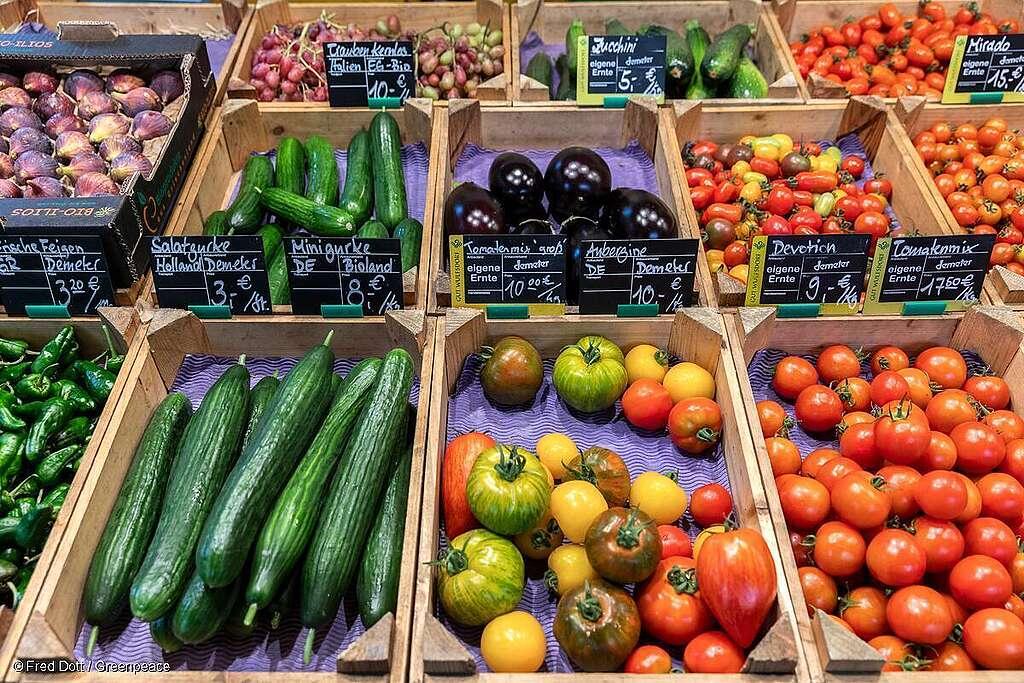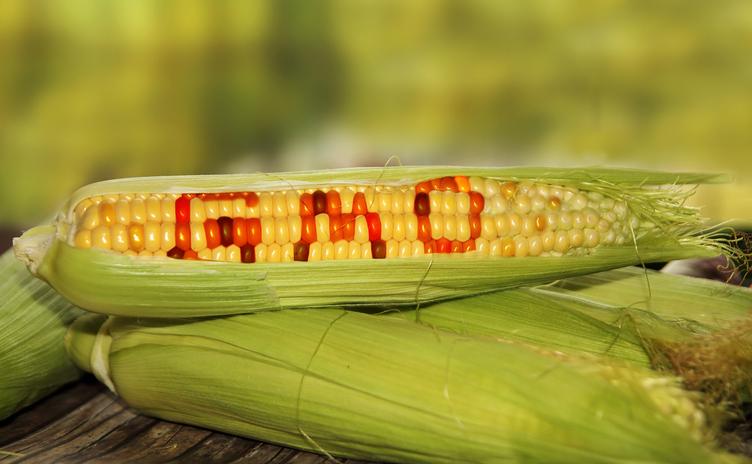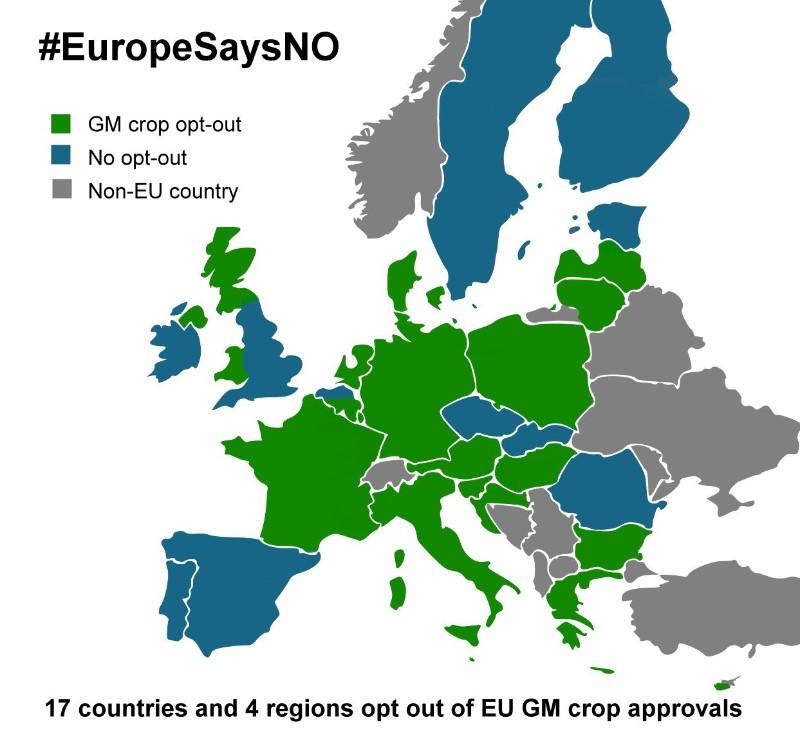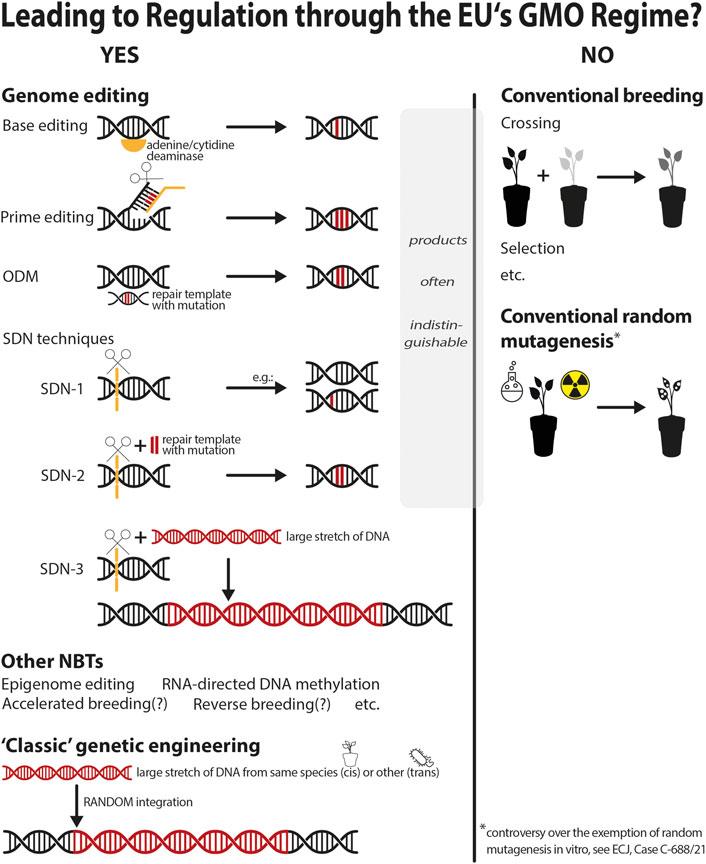For decades, the European Union has tread carefully through the complex terrain of genetically modified (GM) crops, balancing scientific innovation with public skepticism and environmental caution. But now, a subtle yet significant shift appears on the horizon. As global food security challenges intensify and biotechnological advances accelerate, the EU is reexamining its long-held policies, opening the door to a new chapter in agricultural biotechnology. This evolving stance reflects not only changing scientific perspectives but also a dynamic interplay of economic, environmental, and societal factors that could reshape the future of farming across Europe.
Table of Contents
- EU’s Evolving Policy Landscape on Genetically Modified Crops
- Balancing Innovation and Safety in Agricultural Biotechnology
- Implications for Farmers and the Food Supply Chain
- Addressing Public Concerns and Enhancing Transparency
- Strategic Recommendations for Sustainable GMO Integration
- Frequently Asked Questions
- In Retrospect
EU’s Evolving Policy Landscape on Genetically Modified Crops
The European Union’s stance on genetically modified (GM) crops has experienced a notable transformation over recent years, reflecting a blend of scientific advancements, public concerns, and geopolitical shifts. While the EU once maintained one of the strictest regulatory frameworks globally, a growing recognition of biotechnology’s potential benefits-such as enhanced crop resilience and sustainability-is gradually reshaping policies.
Key factors influencing this evolution include:
- Scientific evidence: Increasing data supports the safety and environmental advantages of certain GM varieties.
- Climate goals: The EU’s commitment to carbon neutrality encourages adoption of crops that require fewer pesticides and fertilizers.
- Member state autonomy: New regulations grant countries more freedom to decide on GM crop cultivation within their borders.
To illustrate this shift, the following table contrasts the EU’s earlier policy posture with emerging trends:
| Aspect | Past Approach | Current Trend |
|---|---|---|
| Approval Process | Lengthy, precautionary | Streamlined, evidence-based |
| Member State Control | Limited | Expanded discretion |
| Public Engagement | Reactive | Proactive communication |
| Focus | Risk avoidance | Innovation and sustainability |
Despite these advancements, challenges persist-particularly in harmonizing diverse national opinions and addressing consumers’ ethical concerns. Yet, this evolving landscape signals a willingness within the Union to balance precaution with progress, potentially paving the way for broader acceptance of genetically modified crops as part of Europe’s agricultural future.

Balancing Innovation and Safety in Agricultural Biotechnology
As the European Union recalibrates its approach toward genetically modified crops, the pursuit of innovation must be carefully balanced with a steadfast commitment to safety. The challenge lies in fostering cutting-edge agricultural technologies that can address food security and climate resilience while ensuring that ecological and human health risks are minimized.
One of the critical aspects of this balance involves rigorous scientific assessments combined with transparent regulatory frameworks. These frameworks not only evaluate potential risks but also consider the socio-economic impacts of GM crops on farmers and consumers alike. By engaging diverse stakeholders-from biotechnology experts to environmental advocates-the EU aims to create policies that are both progressive and precautionary.
In practice, this means adopting a multi-layered strategy:
- Strict safety evaluations: Continuous, evidence-based testing to detect any unforeseen effects.
- Adaptive legislation: Laws that evolve in response to new scientific findings and technological advancements.
- Public engagement: Inclusive dialogues that build trust and increase awareness about the benefits and risks of genetic modification.
- Environmental monitoring: Ongoing surveillance of ecosystems to identify and mitigate any long-term impacts.
| Aspect | Focus | Outcome |
|---|---|---|
| Innovation | Improved crop traits | Higher yields, climate resilience |
| Safety | Risk assessment protocols | Minimized environmental/human risks |
| Regulation | Adaptable policies | Balanced progress and precaution |
| Engagement | Stakeholder involvement | Increased transparency and trust |
Implications for Farmers and the Food Supply Chain
Farmers across the European Union are now facing a transformative period as regulatory barriers to genetically modified (GM) crops begin to ease. This shift could empower growers to adopt more resilient and higher-yielding varieties, potentially reducing dependency on chemical pesticides and fertilizers. For many, this means increased crop diversification and a chance to enhance sustainability on their farms.
However, with new opportunities come new challenges. Farmers will need to navigate updated compliance frameworks, ensuring that GM crop cultivation aligns with evolving labeling and traceability standards. Education and extension services will play a crucial role in helping farmers understand the benefits and responsibilities associated with these technologies.
- Improved Crop Yields: Access to GM seeds designed for local climates.
- Environmental Benefits: Potential reduction in pesticide use and soil degradation.
- Market Adaptations: Need to meet consumer expectations and regulatory requirements.
From a broader food supply chain perspective, this shift could streamline production and reduce costs, but it also demands increased transparency. Supply chain actors must implement robust segregation and certification systems to accommodate both GM and non-GM products, ensuring consumer choice and trust remain intact.
| Stakeholder | Potential Benefit | Key Consideration |
|---|---|---|
| Farmers | Higher yields and resilience | Compliance with new regulations |
| Processors | Consistent raw material supply | Segregation of GM and non-GM crops |
| Retailers | Expanded product offerings | Clear labeling for consumers |
| Consumers | Access to affordable food | Transparency and choice |

Addressing Public Concerns and Enhancing Transparency
In recent years, the European Union has taken significant steps to bridge the gap between scientific innovation and public apprehension surrounding genetically modified crops. Recognizing that transparency is paramount, policymakers have launched new initiatives aimed at openly communicating the benefits and potential risks associated with genetic modification. This approach fosters trust and empowers consumers to make informed decisions based on clear, accessible information.
Key measures introduced include:
- Regular public consultations to incorporate citizen feedback in regulatory frameworks.
- Transparent labeling systems that clearly distinguish GM products in the marketplace.
- Independent scientific assessments published openly to dispel myths and clarify uncertainties.
Furthermore, the EU has prioritized educational campaigns designed to demystify genetic technologies. These efforts are complemented by partnerships with universities, NGOs, and industry stakeholders to ensure a balanced dialogue. By providing fact-based resources and fostering community engagement, the EU aims to create an environment where innovation and public interest coexist harmoniously.
| Initiative | Purpose | Impact |
|---|---|---|
| Public Consultations | Gather citizen input on GM policies | Enhanced democratic participation |
| Transparent Labeling | Clear product identification | Increased consumer trust |
| Educational Campaigns | Inform public on scientific facts | Reduced misinformation |

Strategic Recommendations for Sustainable GMO Integration
To align with the evolving EU policies on genetically modified crops, stakeholders must embrace a multifaceted approach that balances innovation with ecological responsibility. Central to this is the promotion of transparent communication channels between policymakers, scientists, and the public, ensuring that decisions are informed by both cutting-edge research and societal concerns.
Key strategies include:
- Adaptive Regulatory Frameworks: Developing flexible policies that can swiftly incorporate scientific advancements while maintaining rigorous safety standards.
- Collaborative Research Initiatives: Fostering partnerships across EU member states to pool resources and expertise, accelerating the development of sustainable GMO varieties.
- Public Engagement and Education: Launching targeted campaigns to address misconceptions, highlight benefits, and build trust among diverse communities.
Embedding sustainability into GMO integration also requires a keen focus on environmental stewardship. This means rigorous impact assessments and continuous monitoring to prevent unintended ecological consequences. Additionally, promoting crop diversity and utilizing gene-editing techniques that minimize foreign DNA insertion can further enhance sustainability credentials.
| Recommendation | Expected Impact | Timeline |
|---|---|---|
| Adaptive Regulatory Frameworks | Faster innovation cycles, improved safety | 1-3 years |
| Collaborative Research Initiatives | Shared knowledge, cost efficiency | Ongoing |
| Public Engagement & Education | Increased acceptance, informed debate | 6 months – 2 years |
Frequently Asked Questions
Q&A: Understanding the EU’s Shift on Genetically Modified Crops
Q1: What is the recent change in the EU’s stance on genetically modified (GM) crops?
A1: The European Union has recently signaled a more open and flexible approach towards genetically modified crops, moving away from its historically cautious and restrictive policies. This shift reflects a growing recognition of GM technology’s potential to address agricultural challenges such as climate change, food security, and sustainability.
Q2: Why has the EU traditionally been cautious about GM crops?
A2: The EU’s cautious stance stemmed from public concerns over food safety, environmental impacts, and ethical considerations. Strict regulations and rigorous risk assessments were put in place to ensure that GM crops would not harm consumers or ecosystems, reflecting a precautionary principle deeply embedded in EU policy.
Q3: What factors have influenced this recent policy shift?
A3: Several factors have contributed, including scientific advancements that have improved GM crop safety, increasing climate pressures on European agriculture, and the need to boost crop resilience and yields. Additionally, global developments and trade considerations have pushed the EU to reconsider its position to remain competitive and sustainable.
Q4: How might this policy change impact European farmers?
A4: If embraced, the new stance could provide farmers access to innovative GM seeds that offer benefits like drought tolerance, pest resistance, and reduced need for chemical inputs. This could lead to higher productivity, lower costs, and more environmentally friendly farming practices.
Q5: Are there concerns or criticisms about the EU’s new approach?
A5: Yes, skepticism remains among some environmental groups, consumer advocates, and member states worried about potential ecological risks, corporate control over seeds, and long-term health effects. The EU aims to address these concerns through continued research, transparent regulation, and public engagement.
Q6: What does this mean for the future of food and agriculture in Europe?
A6: The shift opens the door to integrating cutting-edge biotech solutions into European agriculture, potentially transforming food production toward greater sustainability and resilience. It signals a balancing act between innovation and precaution, as the EU navigates a complex landscape of science, policy, and public opinion.
Q7: How will the EU ensure the safety of GM crops moving forward?
A7: The EU plans to maintain rigorous safety assessments, monitoring, and labeling requirements to protect consumers and the environment. Regulatory frameworks will evolve to keep pace with scientific developments, ensuring that only GM crops meeting strict criteria are approved for cultivation and market entry.
Q8: Could this shift affect international trade relations?
A8: Potentially, yes. A more accepting attitude toward GM crops may facilitate trade with countries where such crops are widely used, reducing barriers and aligning standards. However, it could also spark debates with nations holding stricter anti-GM policies, requiring diplomatic and regulatory navigation.
Q9: What role will public opinion play in the EU’s evolving GM crop policy?
A9: Public opinion remains crucial. The EU is committed to transparency and dialogue, seeking to educate and engage citizens about the science and benefits of GM technology while addressing ethical and safety concerns. Public acceptance will be a key factor in the policy’s success.
Q10: Where can readers follow updates on the EU’s GM crop policies?
A10: Updates can be found through official EU channels such as the European Commission’s agriculture and health departments, scientific publications, and reputable news sources covering biotechnology and agricultural policy developments.
In Retrospect
As the European Union charts a new course on genetically modified crops, the landscape of agriculture and innovation in the region stands on the brink of transformation. Balancing scientific progress with environmental stewardship and public sentiment, the EU’s evolving stance signals a nuanced dialogue between tradition and technology. While uncertainties remain, this shift opens doors to fresh possibilities-inviting policymakers, farmers, and consumers alike to reimagine the future of food in a changing world. The story of GM crops in Europe is far from over; it’s merely entering a new chapter, rich with potential and complexity.

